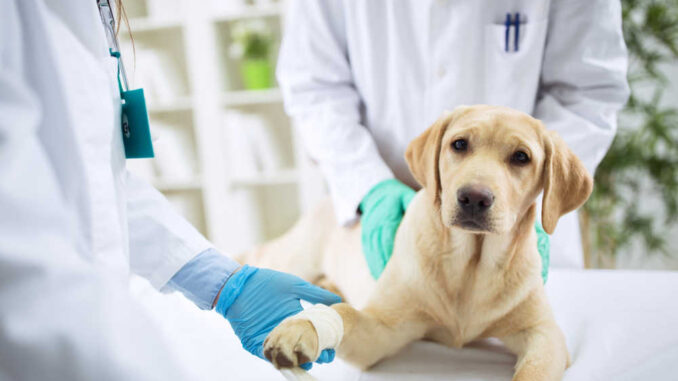
This article was updated on January 12th, 2024
Dogs love to have fun and be rambunctious. Unfortunately, just like human children, dogs sometimes find themselves with an injury, which is often a wound. As a practicing veterinarian of 17 years, I have seen thousands of dogs with wounds ranging from small and simple to large and life-threatening.
Stages of wound healing in dogs
The stages of wound healing are the same for both humans and dogs. There are four phases, which occur in order:
Stage 1 – Hemostasis (stopping the bleeding)
This is the first phase of wound healing, and it begins instantaneously when the injury occurs. Hemostasis is the process through which the body attempts to stop bleeding. This process involves blood clotting factors, fibrin, and platelets. When this process is finished, there will be a scab present.
This picture shows a fresh laceration in the first stage of healing (warning: graphic image).
How your vet can help at this stage: If you cannot easily control the bleeding from a wound, you need to take them to the nearest emergency veterinarian immediately.
What can go wrong at this stage and how to recognize it: Dr. Whittenburg explains:
“A wound should stop bleeding on its own or with gentle pressure within the first ten minutes. If the bleeding will not stop or begins again after pressure is removed, the dog must be seen by a veterinarian right away.”
Stage 2 – Inflammation (swelling / redness)
This second process of wound healing begins as soon as the damage to the tissue is recognized. Signaling factors bring white blood cells to the area, which release enzymes that trigger inflammation. The results are:
- swelling,
- heat,
- pain, and
- redness.
Though often thought of as a negative consequence of injury, normal inflammation serves to stop bleeding and promote healing. The picture below shows a second stage of healing: you can see the wound is slightly red and mildly inflamed.
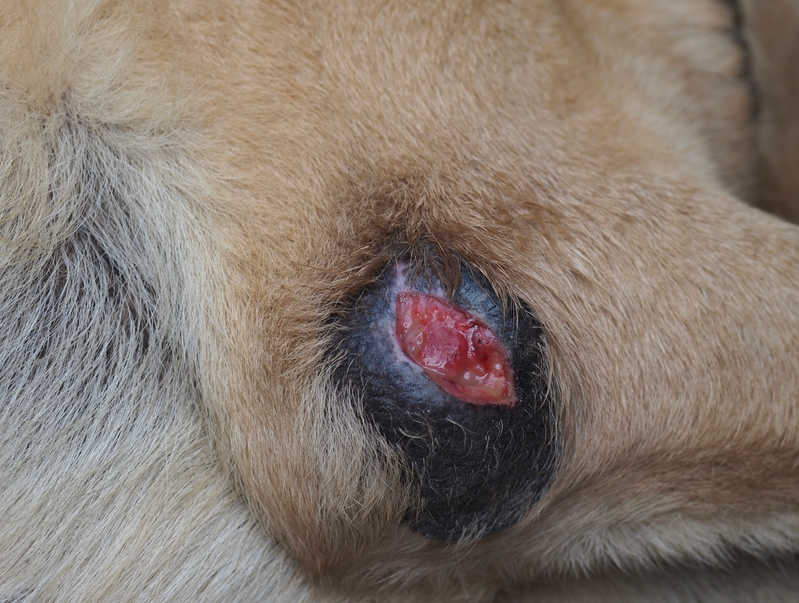
How your vet can help at this stage: A wound this large and deep needs veterinary attention. Suturing (stitches), cleansing, and medications will all be necessary to aid the laceration in healing.
What can go wrong at this stage and how to recognize it: This is the phase where sutures need to be placed. If left open, wounds may heal poorly or unevenly, or not at all.
Stage 3 – Proliferation (healing)
The third phase is typically what most people think of as “healing.” The wound will contract, and the body will use collagen and other necessary tissue components first to make granulation tissue, and ultimately close the wound completely. On the picture below, you will see the third stage of the wound healing process on a dog: this wound has been properly closed and is healing well.

How your vet can help at this stage: This stage consists mostly of watching the wound site at home and keeping it clean. Unless directed by your veterinarian you should never bandage a wound. The wound should be kept clean and dry and all prescribed medications should be administered.
If the wound is healing well, no treatment will be necessary. However, failed sutures and infections will require repair and treatment.
What can go wrong at this stage and how to recognize it: During this stage, the repair may fail, especially if the dog is too active or is allowed to lick or scratch the area. This is also the stage where infection may occur. The wound should be watched closely for failure to heal, increasing redness, heat, or pain, and purulent discharge (pus).
Stage 4 – Maturation (scarring)
This phase is sometimes called “remodeling.” This is when a scar forms. In this stage, the wound is fully closed and the final collagen layers are laid down in the area of injury. The maturation phase will persist for varying periods of time, and the scar of the wound will typically shrink and flatten.
How your vet can help at this stage: Typically, by this fourth phase, no further intervention is needed.
What can go wrong at this stage and how to recognize it: The areas of wounds may be fragile as they are newly healed and may re-open. If this occurs treatment will likely be necessary and the phases will start over.
What’s the timeline for these stages?
Each of these stages will vary in time depending on:
- the severity of the wound
- where it is located on the body
- age and health status of the dog
- other factors such as the dog’s activity level and the treatment they receive (sutures vs. healing via second intention)
All these factors will have drastic effects on healing times.
Pictures documenting the healing process of an incision within the first 30 days
We have listed below several pictures showing the different healing stages of an incision after a Luxating Patella surgery on a 6-year-old Terrier dog:
Day 3:
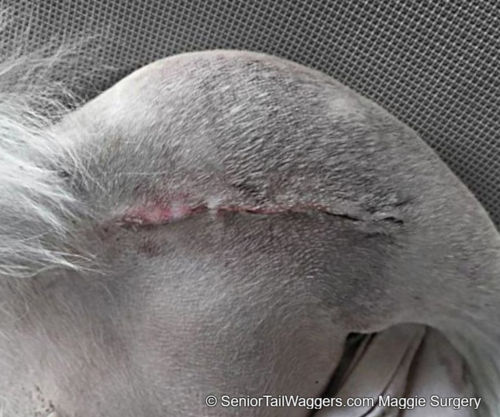
Day 6:
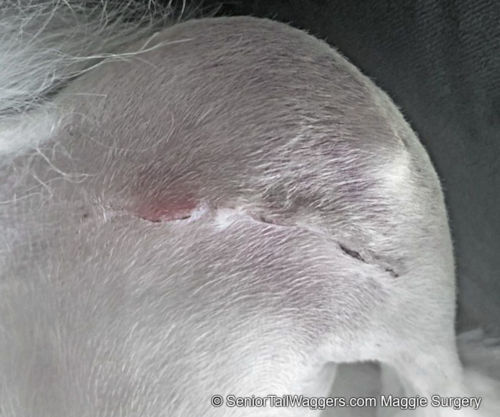
Day 8:
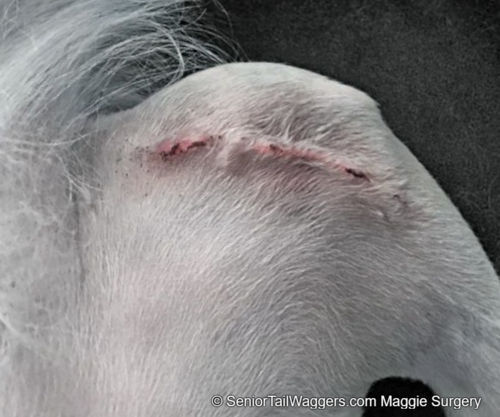
Day 12:
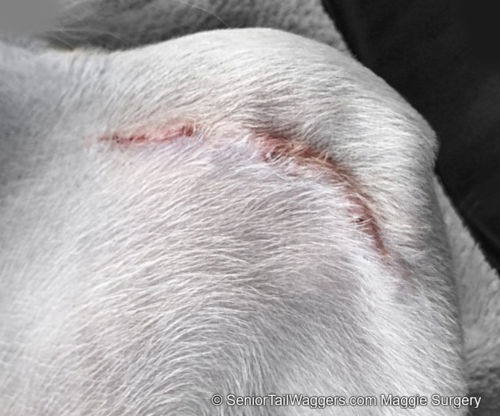
Day 16:
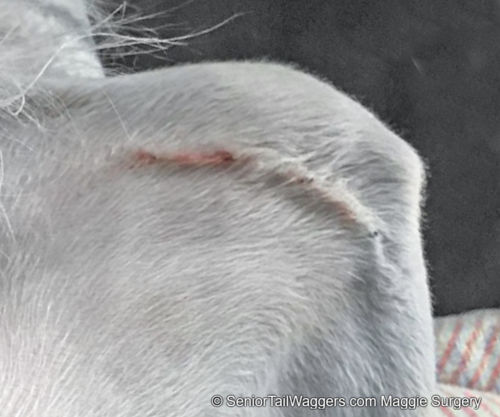
Day 25:
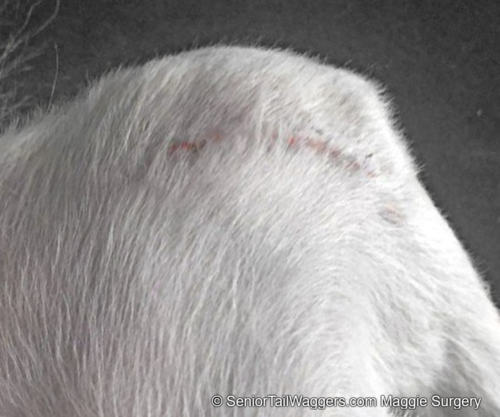
Signs of wound or incision infections
Wounds that are not properly treated may become infected.
Signs to watch for include:
• Redness – Slight redness to the area of a wound can be normal, but excessive redness, redness that appears suddenly, or worsening redness are causes for concern
• Swelling – A healthy and well-healing wound should not be overly swollen. Also, swelling should decrease, never increase.
• Heat – Wounds that are infected will become hotter than the skin around them.
• Pus (may be white, green, or yellow)
• Red streaking – Any redness that is streaking out from around the wound should be evaluated by your veterinarian.
• Pain – Of course, a wound will be tender, but like redness, swelling, and heat, pain should decrease as the wound heals. Any increase in pain is cause for concern.
• Foul smell
View pictures of incision infections.
If any of the above are seen, the dog needs to see their veterinarian as soon as possible.
What if your dog’s wound is not healing well?
If your dog’s wound is not healing properly or has become infected, it is imperative that you get them veterinary attention as soon as possible. Your veterinarian will examine the wound and will also evaluate the dog’s history in order to formulate a treatment plan.
Common Types of Wounds in Dogs
1. Lacerations: Laceration is the medical term for a cut. These injuries may result from sharp objects running along the skin as well as the teeth of other animals. These cuts can vary in both length and depth but are linear.
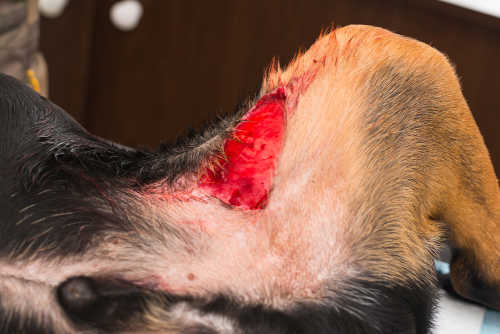
2. Puncture wounds: Puncture wounds are most commonly caused by teeth of another animal deeply piercing the skin. These injuries are round and deep.
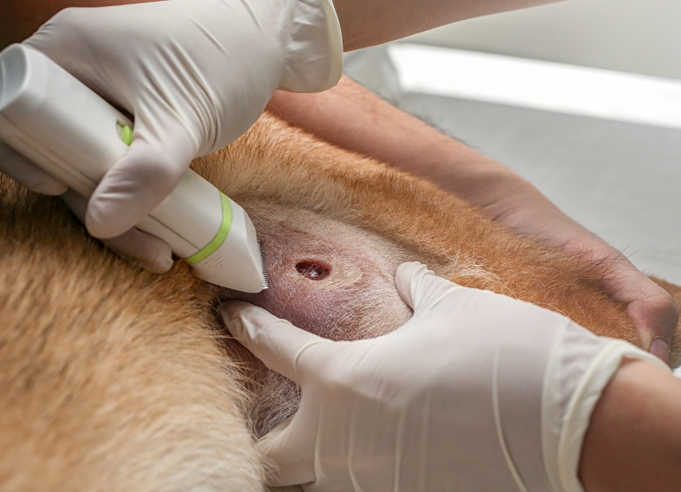
3. Abscesses: An abscess is a collection of pus that appear as painful swelling. Abscesses can be firm or soft, and will sometimes rupture and drain a liquid with an unpleasant smell.
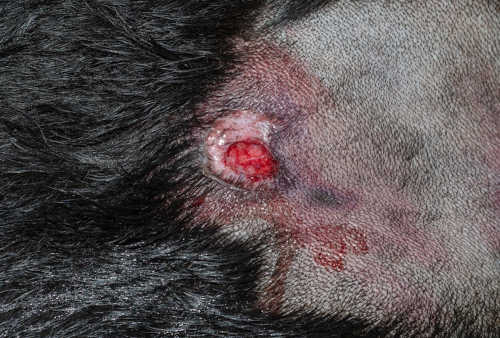
4. Scrapes/Hot spots: scrapes may result whenever something abrasive rubs along the skin, including the dog’s own tongue. These wounds are superficial but may be over larger areas. Learn more about hot spots in dogs.
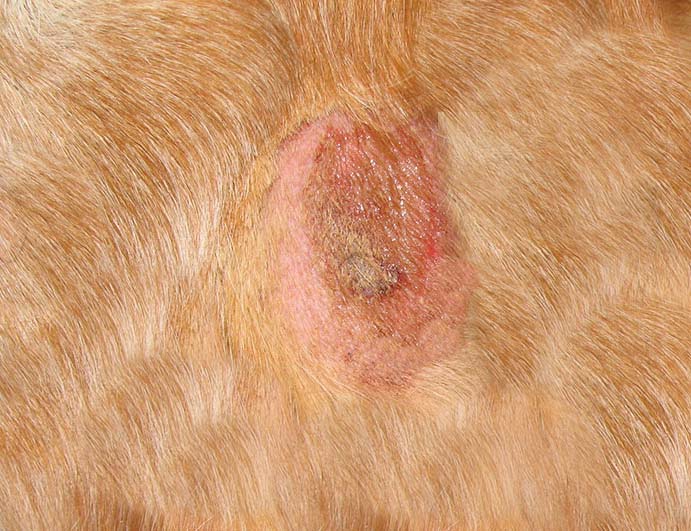
What is a wound?
A wound is any injury that causes damage to the dog’s skin and often the underlying tissues. Examples include:
• Lacerations
• Puncture wounds
• Abscesses
• Scrapes
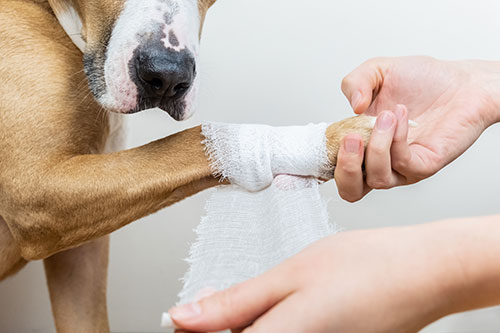
Related posts:
Disclaimer: This website's content is not a substitute for veterinary care. Always consult with your veterinarian for healthcare decisions. Read More.



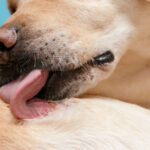
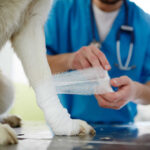
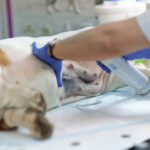
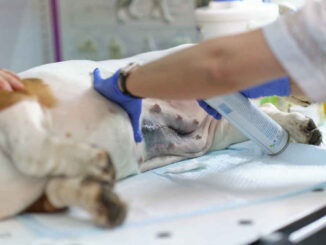
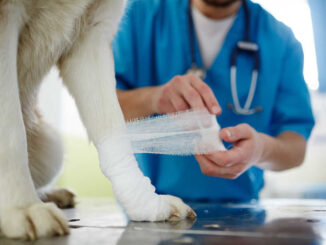
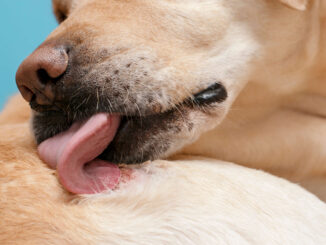
Be the first to comment